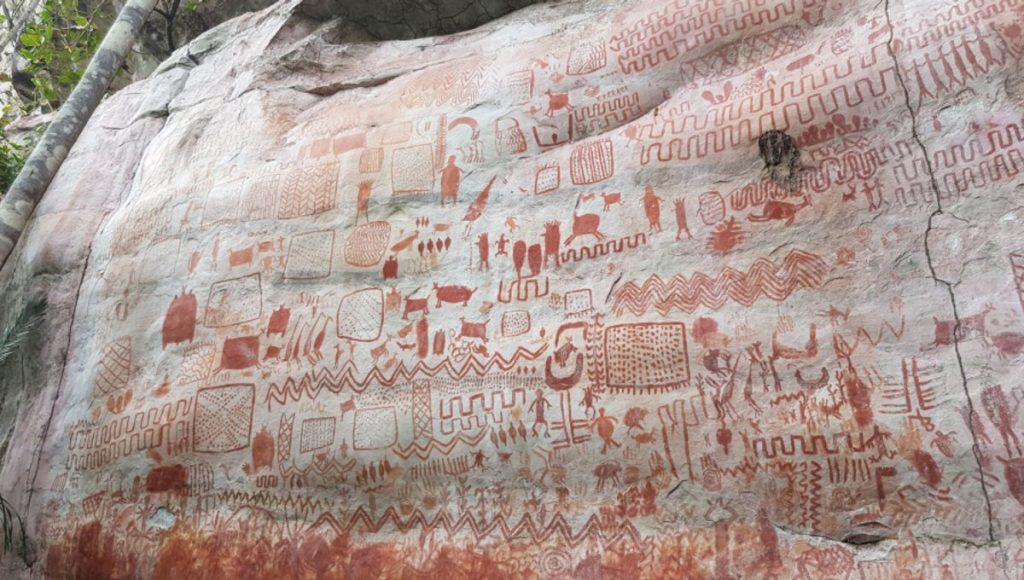When humans first set foot in the Amazon basin thousands of years ago, they were greeted by countless animals they had never seen before. Amazingly, some of these early encounters between humans and animals are recorded in ancient rock art in Colombia.
In a new study, researchers report a diversity of animals depicted in 12,500-year-old rock art from Serranía de la Lindosa in the Colombian Amazon, including a wide variety of monkeys, fish, birds, and deer.
This suggests that the earliest humans living in the region had deep and detailed knowledge of the wildlife around them and the complex ecosystems they inhabited, the researchers say.
“Indigenous peoples of Cerro Azul and the surrounding area hunted and depicted a diverse range of animals from different ecosystems, from aquatic fish to arboreal monkeys, from terrestrial deer to nocturnal and diurnal flying birds,” said study author Dr Javier Aceituno of the University of Antioquia in Colombia. statement.
“They had in-depth knowledge of the different habitats in the region and had the appropriate techniques to track and hunt each animal and harvest plants as part of a broader survival strategy,” he explained.
In this region Rock paintings The site has been known about for some time, but archaeologists have struggled to study it due to the treacherous terrain and political instability, but a 2016 peace deal between the Colombian government and the FARC guerrilla group has given researchers better access to the area.
A total of 3,223 images were catalogued in Serranía de la Lindosa, of which approximately 58 percent were figurative images depicting shapes in the visible world, rather than geometric forms or abstract patterns.
Possible images: a) fishing, b, c, e) hunting, d) monkey leaping/transforming sequence, f) unknown animal with circular feet and curved head.
Image courtesy of University of Exeter
Some of the figurative imagery featured humans and plants, but the majority were non-human animals. In total, the researchers identified at least 22 different animal species, including deer, birds, peccaries, lizards, turtles, tapirs, snakes, caimans, and crocodiles. There were also several fishing scenes, but no fish were explicitly depicted.
Strangely, there was no depiction of the jaguar. Late civilizations of the AmazonIt is unclear why this charismatic creature is not depicted in the work, but it may speak to the spiritual importance of the jaguar: in a time when there was no strict boundary between the human, animal and supernatural worlds, it may have been considered foolish or disrespectful to depict a ferocious predator.
“These rock art sites contain the earliest evidence of humans in the western Amazon, dating back 12,500 years, so the art gives us fantastic insights into how these first settlers understood their place in the world and how they developed relationships with animals,” added Dr Mark Robinson, Associate Professor of Archaeology at the University of Exeter.
“This situation shows how Amazonian people had complex relationships with animals, not just as a source of food but also as objects of worship with supernatural connections that required complex negotiation by ritual experts,” Dr Robinson said.
This new study Journal of Anthropological Archaeology.


